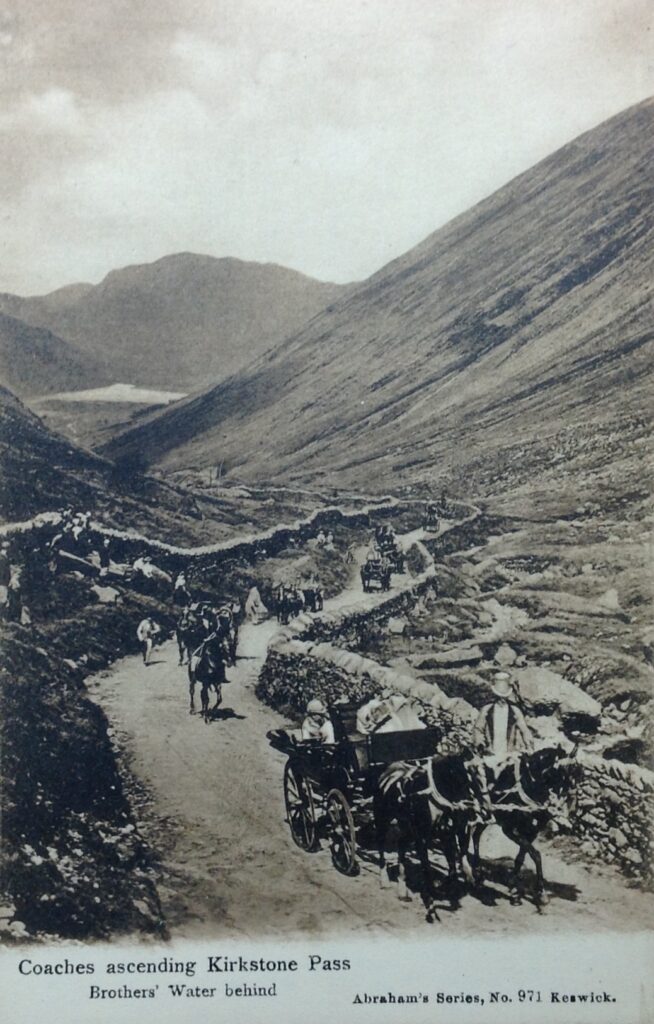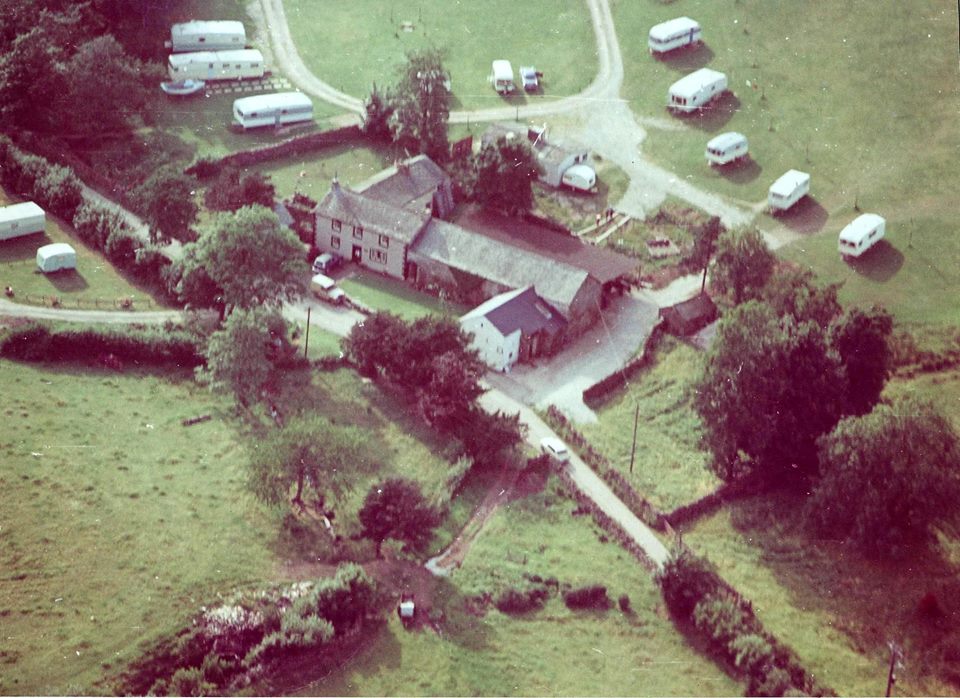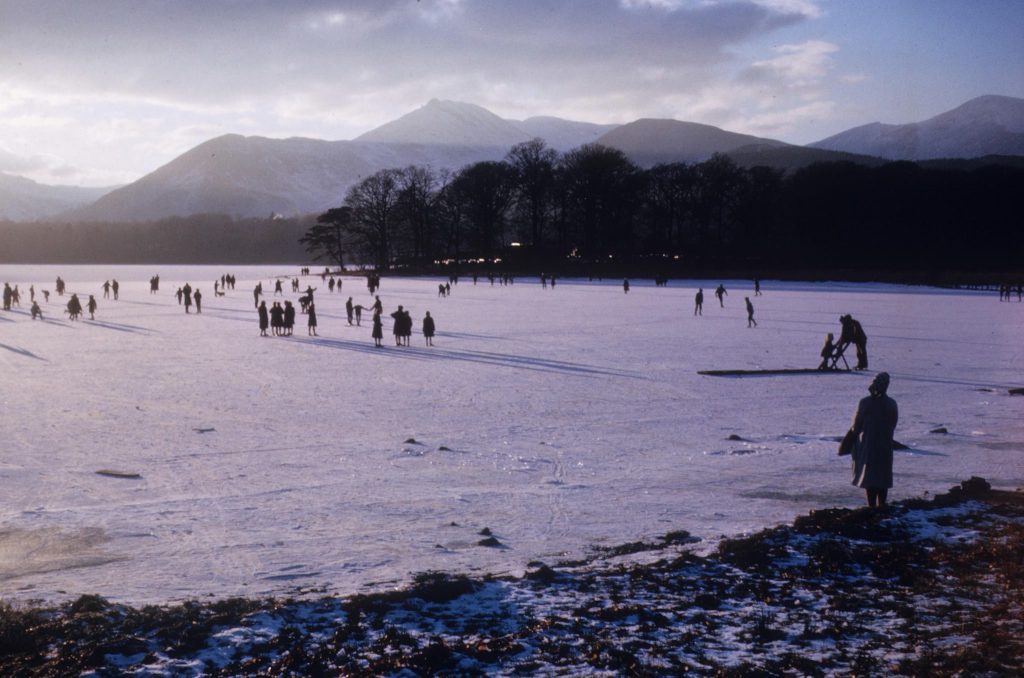Significant investment has been underway for the last two decades with well over 2 million pounds being invested in the latest technologies to make us not just a great place to visit but also one of the greenest parks in the land.
The Quiet Site opened its doors to campers and caravanners way back in 1963. Occupying a magnificent position overlooking Ullswater it very soon became a firm favourite and today we are welcoming back 3rd generation campers from the same families. The year we opened had one of the coldest winters on record. All the Lakeland lakes froze and ice skating was the order of the day.
Ullswater has always remained one of the quietest lakes, despite it being one of the most beautiful. The Ullswater Steamers have been running for more than 150 years (with some of the same boats..!) and show off much of the valleys natural beauty.
The Holder family bought The Quiet Site over in 1985 after a successful background in electrical engineering. Many changes and improvements have happened during our time here and we have many more plans. Sympathetic quality development has been the hallmark of our tenure so far. We have concentrated on a fully sustainable approach to business for the last 15 years. After nearly 40 years we consider ourselves ‘nearly’ Ullswater locals.
The future is exciting and will focus on sustainability, quality and a circular economy.
The bar is often referred to one of the finest in Britain and who are we to disagree..! It is certainly the oldest campsite bar in Britain. The structure is a Grade 2 Lisited building. It is noted for the Crook beams clearly visible in the roof. The bar area is open all day and starts to serve drinks in the evening. The bar building dates from the 1500’s. There are two date stones in the bar: one 1752 and one 1680..! The bar is open every night of the year and often boasts live music. All beer is supplied by the local Tirril Brewery.
500 million years ago, the oldest rocks in the Lake District sat at the bottom of an ancient sea. Oxygen-poor mud and debris settled on the sea floor and hardened into rock that has persisted over hundreds of millions of years. It is now named the Skiddaw Group, and its rocks are exposed in the northern third of the Lake District.
About 450 million years ago, the collision of tectonic plates initiated a period of intense volcanic activity. The resulting rocks make up what is now known as the Borrowdale Volcanic Group, which forms the base of the mountainous middle of the Lakes. The rocks are conspicuous brown peaks rising above the vegetated surroundings.
The southern third of the Lake District consists of slates, siltstones and sandstones. Called the Windemere Group, these rocks formed at the bottom of the ocean about 420 million years ago.
About 400 million years ago, a mountain-building event known as the Caledonian Orogeny thrust all the rocks out of the sea, and magma reshaped the rock layers into complex configurations.
The mountain range may have rivaled the height of today’s Himalayas , but millions of years of erosion wore the rocks down to low-profile hills and by 350 million years ago, the land was once again at the bottom of an ancient ocean. A layer of sea life detritus coated the older rocks, and those fossil shells and corals persist in the Lake District today.
During the Carboniferous Period, mud infiltrated the shallow sea. Some 280 million years ago, another mountain-building event, the Variscan Orogeny, again lifted the rocks.
In the hundreds of millions of years since today’s Lake District rocks formed, they not only rose and fell vertically, they also traveled northward. The rocks of today’s national park sat well south of the equator about 500 million years ago.
In much more recent geologic time 2 million years ago Pleistocene glaciers crept southward to cover most of mainland Britain. The glaciers advanced and retreated multiple times, carving deep valleys that later filled with meltwater and rain. The volcanic rock holds the water in place rather than allowing it to seep out, sustaining the lakes that give the park its name.
More recently, the last ice age, around 20000 years ago, saw an ice slab 900 meters thick (just below the highest Lakeland peaks) cover the park.
10000BC Ice slab melts over Cumbria forming the valleys and lakes.
3500BC First man arrives in Cumbria and the Neolithic Age is in full swing. The Langdale Axe factory exported thousands of axe heads across the United Kingdom.
2000BC Stone Circles appear during the Bronze age. Castle Rigg and Long Meg are just a few minutes from Ullswater.
100BC Iron age. Hill forts from this time include; Dunmallard Hill (3 miles from The Quiet Site) and Maiden Castle (only 1 mile away!)
78AD What did the the Romans do for us? Well actually quite a lot! They built a road from Brougham to Ambleside aptly called High Street which can be walked easily from The Quiet Site. The Roman fort at Hard Knott is favourite of mine as the view we see today is the exact view the Roman soldiers saw.
945 Edmund 1st (not Blackadder!) defeated the last Cumbrian King, King Dunmail. The Vikings have also been lurking around the area for a few years prior to this
1092 King William II conquered Carlisle for England starting hundreds of years of conflict between the two countries. Fortified houses appear accross Cumbria.
1322 Penrith destroyed by Black Douglas and 30,000 Scots.
1450 the oldest “railway” in the world is discovered in a mine near Caldbeck.
1510 Watermillock Cottage at The Quiet Site built by Joseph Woof.
1558 Watermillock Church built.
1564 Elizabeth I gave Royal assent to mine graphite from Borrowdale to be used in pencils and casting moulds for cannon balls.
1600 Whitehaven becomes the second busiest port in England.
1680 the barn which now houses The Quiet Bar was built.
1711 Englands first efficient Blast Furnace was built in Furness.
1752 Watermillock cottage extended.
1770 William Wordsworth born in Cockermouth.
1778 Whitehaven raided during the American war of independance.
1800 Samuel Coleridge moves to Greta Hall, Keswick to be close to his friend, William Wordsworth.
1811 Pencil factory opens in Keswick.
1834 The Three Bears written by Robert Southey from Keswick.
1844 Commercial railway comes to Cumbria as Lancaster is linked to Kendal.
1847 First Hotel opens at Windermere.
1871 John Ruskin moves to Coniston.
1877 First Steamer on Ullswater starts at the request of Thomas Cook. The original steamer is still running today.
1890 Stan Laurel born in Ulverston.
1901 First Submarine built at Barrow.
1902 Beatrix Potter writes the Tale of Peter Rabbit.
1907 Alfred Wainwright is born.
1910 Pictue of Watermillock Cottage at The Quiet Site.
1926 Watermillock Village Hall built.
1933 Postman Pat’s author, John Cunliffe, is born in Kendal.
1935 The Haweswater valley is flooded to form a reservoir.
1951 The National Park is formed.
1956 Watermillock Cottage is reported derelict in local paper.
1963 Camping and Caravaning starts at The Quiet Site making it one of the oldest sites in Cumbria.
1967 Donald Campbell is killed while attempting to break the world water speed record.
1970 The Shap-Penrith section of the M6 open, perhaps the most picturesque section of motorway in the UK. Britains favourite service station, Tebay, is born.
1974 Westmorland and Cumberland join to form Cumbria.
1987 The film ‘Withnail and I’ is released. Shot at Sleddale Hall, Wet Sleddale near Shap, the film has become one of Britain’s biggest cult films.
2009 and 2015/16 Worst floods ever recorded. Up to 14 inches of rain in 24 hours. Numerous bridges swept away.
2024 Who Knows. 12000 years ago the ice slab melted over Cumbria. Now, with climate change here to stay, the Lake Districts climate is set to become warmer. Farming, post Brexit, is set for massive changes and our landscape may begin to look very different.
And now, all this history AND the countries most beautiful scenery is just a few hours from anywhere in Britain.
Significant investment has been underway for the last two decades with well over 2 million pounds being invested in the latest technologies to make us not just a great place to visit but also one of the greenest parks in the land.



Copyright © 2025 – The Quiet Site